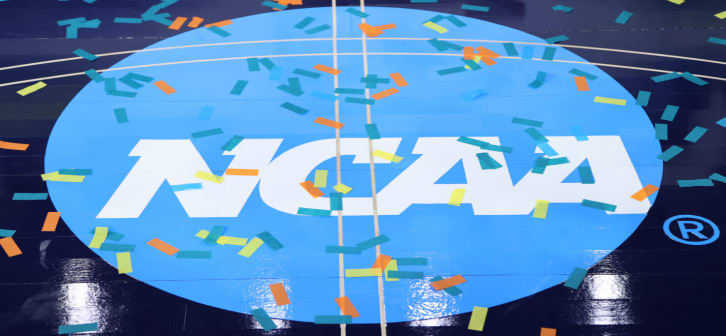The NCAA Needs to Modernize. Here’s How It Is Approaching Key Issues.
Writer
Editor & Writer
Writer
Editor & Writer

- The NCAA's Division I Transformation Committee this month completed a yearlong study and proposed dozens of policy recommendations in its final report.
- Those recommendations aim to transform the NCAA to better serve college athletes' needs.
- Recommendations regarding the health, safety, and well-being of student-athletes are especially critical given pressure by athletes and politicians.
The NCAA is starting 2023 by charting out a path to being more responsive to modern-day challenges like player health, conference realignment, equitable treatment of women athletes, the transfer portal, and name, image, and likeness rules.
Following a yearlong study, the NCAA's 21-member Division I Transformation Committee this month completed a yearlong study and proposed dozens of policy recommendations in its final report to the NCAA's Division I Board of Directors.
The board of directors reviewed the recommendations last week during the NCAA's annual four-day convention in San Antonio, Texas, and will forward approved recommendations to individual Division I committees to create specific rule changes no later than August 2023.
"In recent years, the environment surrounding collegiate athletics has evolved far faster than the structures, processes, and rules we use to govern it," said Southeastern Conference commissioner and committee co-chair Greg Sankey. "College sports' leaders know it's imperative that we transform the NCAA and modernize college sports not just to keep pace with a changing landscape, but to shape and mold it to better serve student-athletes' needs."
The Transformation Committee was appointed by the Division I Board of Directors to lead the division's modernization efforts after a new NCAA constitution was adopted during the 2022 NCAA Convention in Indianapolis.
The committee's recommendations fall into three broad policy areas: student-athlete mental, physical, and academic well-being; improved and expanded Division I championships; and a slimmed-down bureaucracy to ensure a "faster, fairer, and more equitable Division I."
The recommendations regarding the health, safety, and well-being of student-athletes are especially critical. The NCAA has faced harsh criticism from athletes and members of Congress, who have proposed federal legislation to force the NCAA to do a better job of protecting athletes.
The committee's proposed holistic approach would provide medical coverage for athletics-related injuries for a minimum of two years following graduation or completion of athletics experience. The proposed changes also would require schools to pay for athletes who were on full scholarships to get their degrees within 10 years of leaving school.
Additionally, schools would be required to provide greater assistance to athletes regarding name, image, and likeness rules, financial literacy, and career guidance. Lastly, the proposed policy would provide athletes with a greater involvement in determining their sports' governance structures.
"Over the course of the last year, we've received consistent input from student-athletes, membership, NCAA leadership and key voices from inside and outside college sports," Transformation Committee co-chair and Ohio University athletic director Julie Cromer said in the final report.
"The priorities we heard reflected in those conversations — such as student-athletes' desire for heightened support for their mental health, the need for universities to have greater latitude in investing in student-athletes' academic and professional training programs, concerns for athletics departments with structural budget challenges, and opportunities to enhance the experience in a Division I championship — are reflected in this report in different ways," Cromer continued.
Another key recommendation from the committee calls for the expansion of the postseason to include 25% of the teams in good standing with the NCAA.
Division I schools have nearly 200,000 students who play such team sports as basketball, football, softball, and volleyball.
Cromer said the committee believed in a "big tent" approach to sharing the "magic" of college championships.
"So long as their universities can meet minimum expectations in terms of the support they provide, ultimately, we want as many student-athletes as possible to start each season with Division I national championship dreams," Cromer explained.
Going in hand with this recommendation is another that calls for the creation of sport-specific management committees for every sport that has a national championship.
This proposal, which is designed to decentralize power and loosen the NCAA's iron grip on college sports, would create free-standing committees that would have the authority to make decisions quickly without bureaucratic delays. The budgets for championships and for athlete travel also would be increased, under a committee proposal.
Finally, the committee recommended that eligibility rules for athletes be reviewed. In particular, the committee pointed to issues such as delayed enrollment and rules regarding playing and practice seasons.
"In recent years, court challenges and state legislatures have dramatically changed the landscape for college sports. Suddenly, the NCAA's authority to apply consistent rules to schools across the country has been thoroughly strained. Issues that are common to student-athletes and athletics departments across the country are being regulated by vastly different state laws. We're already seeing that with name, image and likeness compensation, which has inspired 30-plus individual state laws," Jere Morehead, chair of the NCAA Division I Board of Directors and president of the University of Georgia, said in the final report.
"For the aspects we love about college sports to exist for future generations, it must continue to transform. Leaders across college sports and higher education recognize that, and we're taking action to put that transformation in motion," Morehead added.
















